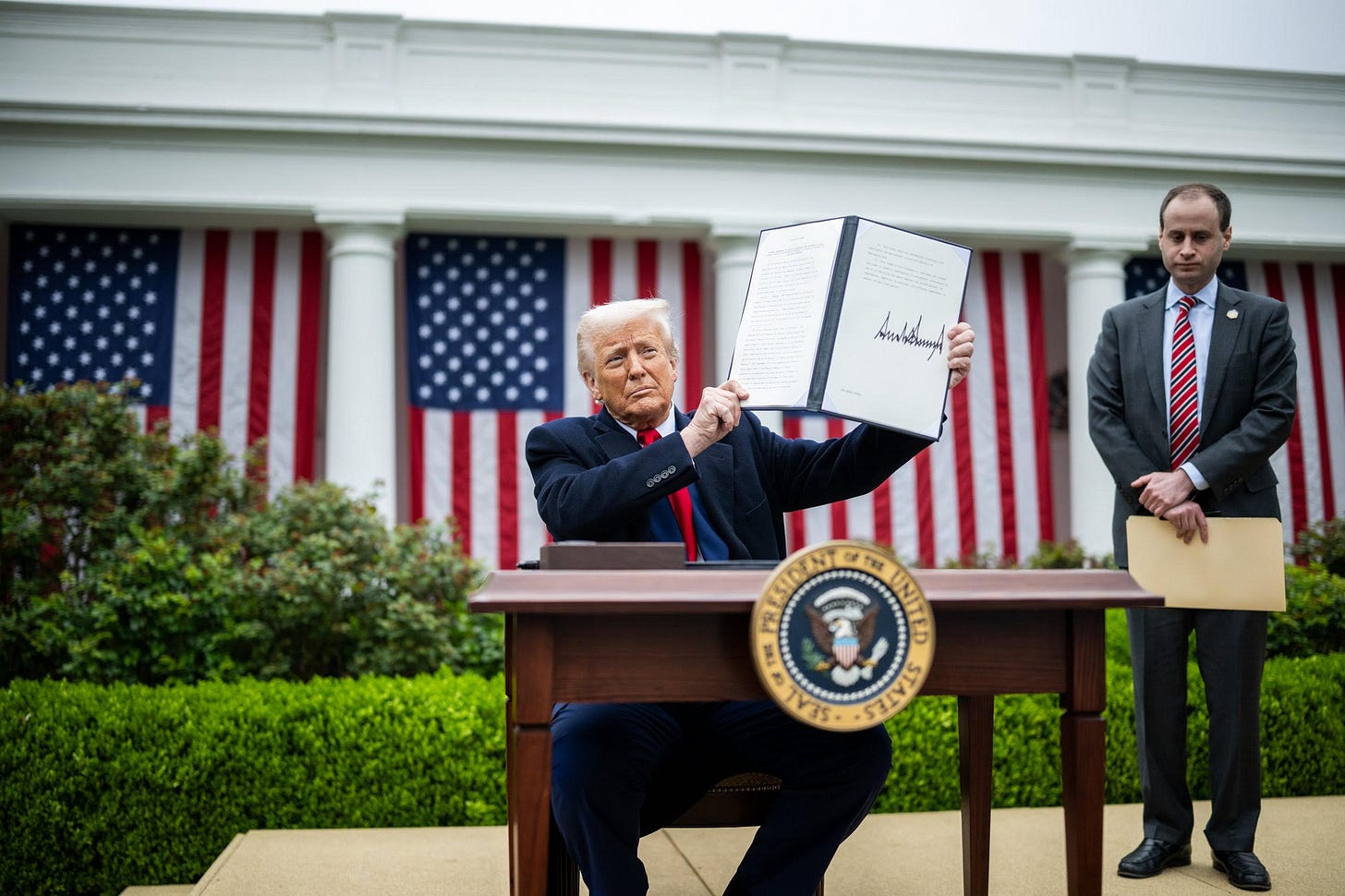How Trump’s Trade War Could Open New Doors for India
There is an opportunity for India in the tariff war. It can lower trade barriers and gain in the long run
US President Donald Trump has unleashed an economic storm by slapping tariffs on imports from around the world. Global stock markets are stumbling, and the specter of a recession looms large over the American economy. No one can predict the full fallout—but what does it mean for India? Could this global disruption be a chance for India to step up?
In this edition of The Ledger, we break down the impact and explore how India could actually gain ground while the world scrambles.
Trump’s Bold Move: Tariffs in the Name of “Liberation”
Trump’s long-standing campaign promise was to protect American industry. His argument: other countries sell to the US at low tariffs, making it cheaper to import than to manufacture domestically. Meanwhile, when America tries to export, it faces high tariffs. This imbalance, he claims, is bleeding US jobs and widening the trade deficit.
On April 2, Trump unveiled a sweeping list of new tariffs—calling the day Liberation Day. From April 9, all imported goods entering the US will be hit with higher duties. Indian products will now face a 26% tariff.
India’s Exposure: Limited, but Not Insignificant
While the stock market has reacted nervously, the direct impact on India’s economy may be limited. Only 2.4% of India’s GDP comes from exports to the US. Put simply, if India produces ₹100 worth of goods and services, just ₹2.40 comes from US-bound trade. Even with higher tariffs, that stream won’t dry up entirely.
Pharmaceuticals—one of India’s biggest export categories—have been exempted for now, offering a temporary cushion. Overall, the likely impact on GDP growth is estimated between 0.2% and 0.6%. Manageable, but worth watching.
Opportunity in the Shockwave
Here’s where things get interesting: the new tariffs don’t single out India. They’re being imposed on all major exporting countries—China, Vietnam, Bangladesh—many of whom compete directly with India in the US market. Compared to them, India’s tariff burden is lower.
That makes Indian-made goods—like textiles and electronics—more attractive in a suddenly reshuffled market. A crisis for others could be a competitive edge for India.
The Bigger Prize: A Trade Deal with the US
Trump has dangled another carrot: countries that lower tariffs on US goods could get relief. Negotiations are underway between Washington and New Delhi.
India is cautious, especially about reducing tariffs on agricultural products—a move that could hurt domestic farmers. But there’s less resistance when it comes to industrial goods.
Commerce Minister Piyush Goyal has already told Indian industries that they must prepare for a post-subsidy world. Protective import duties won’t last forever. Companies must now compete on quality and price. The government, for its part, seems open to lowering tariffs if the US does the same.
The Real Risk: An American Recession
The tariffs may not hurt India directly—but the ripple effects could. Economists warn that these moves could push the US into a downturn, sparking inflation and lower growth. If that happens, the impact will be global.
India needs to prepare—not panic. Because in this moment of global economic uncertainty, there is also a chance to reset, realign, and rise.




